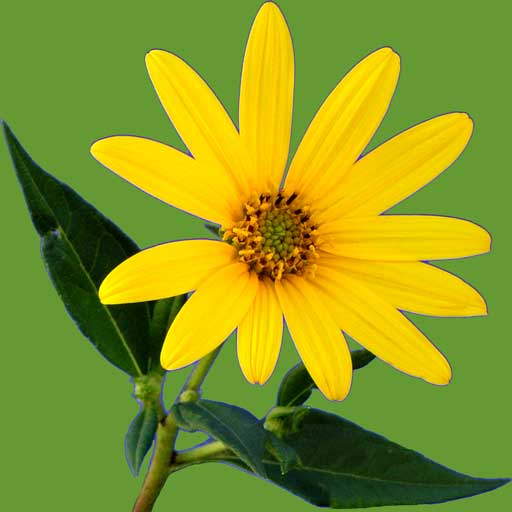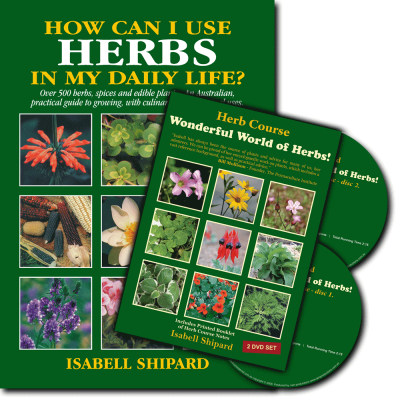Abortifacient: substance that causes abortion
Acrid: hot, biting taste, or causing heat or irritation when used on the skin
Adaptogen: substance that may give stress relief and help build strength, stamina and ballance the body
Adventitious roots: appearing in an unusual place, as along the plant stem
Alkaloids: basic organic compounds which contain at least one nitrogen atom in a ring structure molecule; usually insoluble in water, and often found as salts or organic acids
Alterative: herb that produces a gradual beneficial change in the body
Amino acids: the basic constituents of proteins, consisting of organic compounds
Analgesic: an agent that relieves pain
Anaesthetic: action that deadens sensation
Annual: a plant whose life cycle, from germination to maturity and death, lasts only one growing season
Anthelmintic: destroys or expels intestinal worms
Antibiotic: substance that destroys or arrests the growth of micro-organisms
Antidepressant: a substance that prevents or relieves depression
Antidote: substance that counteracts or neutralises poison
Antihemorrhagic: prevents or stops hemorrhaging
Anti-inflammatory: substance that works to contain the inflammatory process
Antipruritic: stops itching
Antipyretic: reduces the heat of sores, reducing or preventing fever
Antiscorbutic: plant considered to have a high source of vitamin C (for treating or preventing scurvy)
Antiseptic: counter acts infection and destroys bacteria or prevents their growth
Antispasmodic: checks or relieves spasms
Aperient: a mild bowel stimulant
Aphrodisiac: arousing or increasing sexual desire
Aromatic: spicy fragrant smelling herb that dispels stomach and intestinal wind and pain
Arteriosclerosis: hardening of the walls of arteries
Astringent: substance that constricts tissue and can be used to reduce bleeding, inflammation and diarrhea. Contracts or firms up the skin, tissue and mucus membranes
Basal: leaves near the base of the stem, or leaves that form as a rosette at ground level
Biennial: plant whose life cycle, from germination to maturity and death, takes two growing seasons
Bitters: saliva and gastric juice stimulant, to improve appetite and aid digestion
Calmative: mild sedative with tranquillising effect
Carminative: promotes expulsion of wind in the stomach and bowels, and eases accompanying pain
Carotenes: yellow-orange-red pigments in plants, which may be converted into vitamin A in the body
Cathartic: strong laxative
Chlorophyll: the green pigment in plants vital to the process of photosynthesis
Cholagogue: substance that stimulates the release of bile from the gall bladder
Choleretic: substance which stimulates the production of bile by the liver
Coagulant: increases the clotting of blood
Coumarin: a compound found in many plants, and responsible for the aroma of new mown hay which some plants possess
Curcumin: substance found in herbs and spices, which can reduce risk of cancer
Deciduous: a plant that looses its leaves for winter
Demulcent: soothes and softens irritated tissue, particularly the mucus membrane; these herbs have mucilaginous, slippery or oleoginous properties, which can coat, shield and lubricate, as well as relieve pain
Depurative: to purify and free of impurities
Diaphoretic: brings about increased perspiration
Digestive: aids digestion
Diuretic: stimulates kidneys to increase the flow of urine
Dysuria: difficulty or pain in discharging urine
Edema: (dropsy) an abnormal collection of fluid in any cavity of the body or in cellular tissue
Emetic: can induce nausea and vomiting
Emmenagogue: brings on and increases the menstrual flow
Emollient: applied externally to soften and soothe inflamed or irritated surfaces
Essential oil: the odorous principles of plants in the form of volatile oil, usually containing esters and terpenes; these oils are obtained by steam distillation of plant material
Expectorant: discharge of mucus from the respiratory passages
Flavonoids: strong anitoxidant substances in some fruit and vegetables, that can reduce risk of heart disease and cancer
Febrifuge: fever reducing, also called antipyretic
Galactagogue: encourages or increases secretion of milk
Glycoside: organic substance which may be broken down into two parts, one of which is always sugar
Hallucinogenic: a substance that produces hallucination
Hemostatic: arrest hemorrhaging
Hepatic: beneficial for the liver
Hyperglycaemia: condition when there is too much sugar in the blood.
Hypoglycaemia: when blood sugar levels are blow normal levels
Inulin: a complex sugar found in several plants, especially in members of the Asteraceae family
Laxative: loosening to the bowels
Lignin: a fibrous like component of some plants; unaffected by digestion, does not absorb moisture, and passes through the intestinal tract unchanged; aids in binding fats and increases their excretion in faeces
Mucilaginous: the state of being moist and viscid, slimy, slippery, of the nature of mucilage
Nervine: relieves pain and nervous irritation and restores nerves to their natural state
Node: point on the stem of a plant where the leaves or lateral branches are attached
Nutrient: components of food used in nourishing the body, eg. proteins, fats, carbohydrates, vitamins, minerals.
Nutritive: provides nourishment and effects the nutritive and metabolic processes in the body
Ophthalmic: helper to eyes
Palmate: describing a leaf that has a shape like a hand with fingers radiating from the palm
Pavapinnate: a compound, pinnate leaf with an even number of leaflets, usually in regular pairs, but lacking a terminal leaflet
Pectoral: promotes a healing action on chest and lungs
Peristaltic action: muscles of stomach and intestine, by a series of contractions, move food through the body and gastric juices help to make it available to the body, with the residue and fibre forced out of the body as faeces
Petioles: the stalk of the leaf connecting the blade with the stem; when absent a leaf is sessile
Phlebitis: inflammation of the membrane of veins
Prophylactic: herbs that help prevent disease
Purgative: substance that causes an evacuation of the bowel
Raceme: formation where stalked flowers grow along a main stem, the oldest at the bottom
Reniform: kidney shaped, like the seed of beans
Rhizome: underground root, sometimes bulbous in form, from which new plants grow
Rubefacient: causes reddening, can be used for massage to stimulate blood flow
Saponin: substance that foams in water and has a detergent action
Sedative: relieves nervous tension, anxiety and has a calming effect
Sessile: stalkless in form, with no petiole
Sialagogue: promotes salivary flow
Soporific: tending to cause sleep, marked by lethargy and drowsiness
Stimulant: speeds activity, and increases the general functioning of the body
Stomachic: stimulates gastric activity and appetite
Styptic: contracts tissues, blood stopper
Stratification: when seeds are stored in very cold conditions, such as refrigeration for several
Symptom: manifestation or evidence of a disease or physical or functional body disorder
Syndrome: a group of signs and symptoms that occur together and characterise a particular abnormality or disease
Therapeutic: treatment of disease or bodily disorders by remedial agents, methods, or modalities
Tonic: to improve the tone of an organ or the body generally, to restore to health
Umbel: a flower formation where all the stalks grow from one point (eg. parsley, dill)
Vermifuge: causes the expulsion of worms
Volatile oil: called volatile oil as it vaporises readily; also referred to as essential oil
Vulnerary: topical application that promotes healing of wounds


